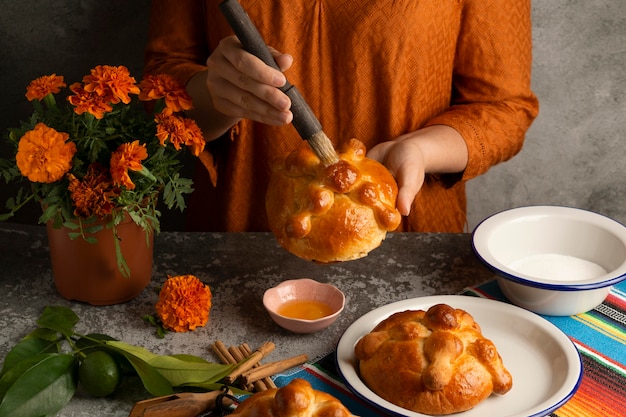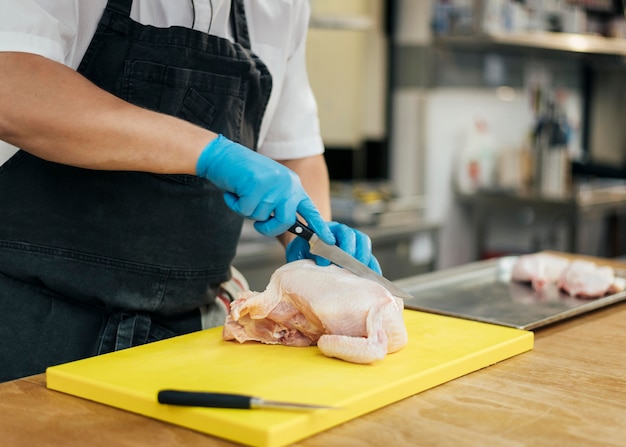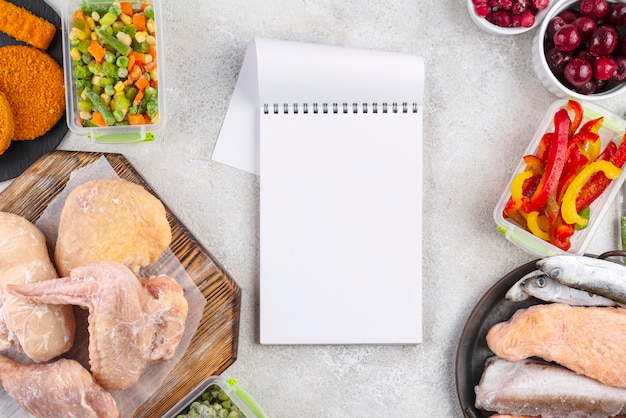Let's talk about chicken, a true culinary chameleon. It's a pantry staple, budget-friendly, and can be transformed into a symphony of flavors in the blink of an eye. But let's face it, cooking chicken can be a bit of a dance with fire. You want it cooked through, but not dry and rubbery. And, of course, we all want to avoid that dreaded food poisoning, right?
Well, I'm here to share my years of kitchen wisdom and guide you to chicken perfection. This is going to be a deep dive into all things chicken cooking temperature, covering everything from choosing the perfect cut to using a trusty meat thermometer (yes, it's a game-changer!) and ensuring your chicken is both safe and bursting with flavor.
Let's get cooking!
(Part 1) The Importance of Temperature: A Crucial Detail

Why Temperature Matters: It's Not Just About the Color
You might think, "Okay, I know I need to cook the chicken until it's not pink anymore." While that's a good starting point, it's not the whole story. The real magic is ensuring the chicken reaches a safe internal temperature. This is where those pesky bacteria get eliminated, and that's how we ensure a safe, delicious meal.
The Golden Standard: safe internal temperature
The Food Standards Agency, our culinary guardians in the UK, recommends a minimum internal temperature of 74°C (165°F) for all chicken parts, whether it's breasts, thighs, drumsticks, wings, or even ground chicken. Hitting this temperature is non-negotiable for safe and enjoyable chicken.
The Meat Thermometer: Your Culinary Sidekick
Now, you might be tempted to say, "I can just tell when it's done by looking at it." But trust me, your eyes can be deceiving! Chicken can look cooked on the outside but still be a little raw inside. A meat thermometer is the only way to guarantee safety and eliminate any doubt.
(Part 2) choosing the right cut: Chicken Cuts for Every Occasion

chicken breast: The Classic Choice
chicken breasts are the go-to choice for many reasons. They're relatively lean, cook quickly, and are perfect for stir-fries, salads, or a simple pan-fried dinner. But they can be a bit dry if overcooked. My secret? Cooking them to the lower end of the safe temperature range, around 74°C (165°F), keeps them juicy and tender.
chicken thighs: The Flavorful Option
Chicken thighs are my personal heroes. They're bursting with flavor, thanks to their higher fat content. They also have a forgiving nature, staying juicy and tender even if you slightly overcook them. I love using thighs for roasting, grilling, or slow-cooking, where their rich flavor shines through.
Drumsticks and Wings: Roasting Kings and Queens
Drumsticks and wings are made for roasting. They've got plenty of bone and skin, which act like natural moisture retainers. They're perfect for a Sunday roast or a casual weeknight meal. The slow roasting allows the flavors to meld and create a truly satisfying dish.
(Part 3) Cooking Methods: A Masterclass in Chicken Techniques

Pan-Frying: Crisp Skin, Juicy Interior
Pan-frying is a fantastic way to get a beautiful crispy skin and a tender, juicy interior, especially for chicken breasts and thighs. The key? A scorching hot pan and enough oil to prevent sticking. Remember to use that trusty meat thermometer to make sure you hit the perfect temperature.
Roasting: Hands-Off, Flavorful Perfection
Roasting is perfect for larger cuts of chicken, like a whole bird or those juicy thighs. It's a hands-off method, letting you pop it in the oven and let the magic happen. Just ensure your oven is preheated to the correct temperature and keep that meat thermometer handy for a final temperature check.
Grilling: Smoky Flavor, Open-Air Cooking
Grilling is all about that smoky flavor. It's ideal for chicken breasts, thighs, or even skewers. The key is to ensure your grill is nice and hot and, of course, don't forget to use your meat thermometer to confirm that golden temperature.
Boiling and Steaming: Simple and Versatile
Boiling or steaming chicken is a quick and easy way to prepare it for soups, stews, or salads. It's a great way to infuse your chicken with the flavors of your broth or other liquids.
(Part 4) Preparing the Chicken: The Foundations of a Great Dish
Patting Dry is Key: A Moisture-Free Zone
Before you even think about cooking, pat your chicken dry with paper towels. This helps to ensure even browning and a crispier skin. It also prevents steaming, which can make your chicken soggy and disappointing.
Seasoning is Essential: Flavor Unleashed
Don't forget the seasoning! You can stick to simple salt and pepper, or unleash your creativity with your favorite herbs and spices. A pinch of paprika, garlic powder, or even chili flakes can add a real punch of flavor to your chicken.
Marinating for Extra Flavor: A Flavorful Infusion
Marinating your chicken before cooking is a fantastic way to add extra flavor and moisture. A simple marinade of olive oil, lemon juice, and fresh herbs is a classic, while a mix of soy sauce, honey, and ginger will take your chicken to the next level.
(Part 5) The Meat Thermometer: Your Chicken's Guardian Angel
Why it's Your Best Friend: A Culinary Must-Have
A meat thermometer is a must-have tool for any cook, especially when it comes to chicken. It gives you peace of mind by ensuring your chicken is cooked to a safe internal temperature without overcooking it, resulting in that dreaded dry chicken.
Types of Thermometers: The Right Tool for the Job
There are a few types of meat thermometers available. Instant-read thermometers are the most common and give you a quick temperature reading. You can also find digital thermometers, which are great for keeping track of the temperature over time.
How to Use a Thermometer: Precision and Accuracy
Insert the thermometer into the thickest part of the chicken, making sure it doesn't touch any bone. Leave it in for a few seconds to get an accurate reading.
(Part 6) Signs of undercooked chicken: Avoiding the PitfallsThe Pink Test (Not Reliable): Don't Rely on Color Alone
Many people use the "pink test" to determine if chicken is cooked. But it can be misleading because chicken can look cooked on the outside but still be pink on the inside.
The Juices Test (Not Reliable): Juices Don't Tell the Whole Story
Another common method is to check if the juices run clear when you cut into the chicken. But this isn't a reliable indicator either. The juices can sometimes run clear even if the chicken is undercooked.
The Touch Test (Not Reliable): Firm Doesn't Always Mean Done
The touch test involves pressing the chicken to see if it feels firm. However, this isn't accurate either because chicken can feel firm even if it's undercooked.
(Part 7) What to Do With Undercooked Chicken: Safety First
Never Reheat Undercooked Chicken: A Big No-No
If you think you've undercooked your chicken, remember: never reheat undercooked chicken. Reheating won't kill off any harmful bacteria and could make you sick. It's simply not worth the risk.
The Best Option: Throw It Away: Safety First
The safest option is to throw away any undercooked chicken. It's not worth the risk of getting sick. A new batch of chicken is always better than risking your health.
Exceptions: Freezing and Storage: Safe Storage
If the chicken is still raw and hasn't been cooked, you can freeze it for later use. Just make sure you wrap it tightly to prevent freezer burn. You can also refrigerate cooked chicken for up to 3 days.
(Part 8) Troubleshooting Common Chicken Cooking Problems: Solutions for Every Scenario
Dry Chicken: Overcooked? Try a Different Method
If your chicken is dry, it might be because you overcooked it. Next time, try lowering the oven temperature, cooking it for a shorter amount of time, or using a different cooking method altogether.
Tough Chicken: Overcooked or Overworked: A Tender Touch
Tough chicken is another sign of overcooking or overworking the chicken. Try cooking it for a shorter period, using a more tender cut of chicken, or being gentle when flipping or stirring the chicken.
Unevenly Cooked Chicken: Not Hot Enough: Get That Oven Ready
If your chicken isn't evenly cooked, it's likely because the oven or pan wasn't hot enough. Ensure your oven is preheated to the correct temperature and use a thermometer to check the internal temperature.
(Part 9) Chicken Serving Suggestions: Flavors and Combinations
Simple and Delicious: Classic Combinations
You can pair chicken with a variety of side dishes, depending on your preference. Roasted vegetables like potatoes, carrots, and broccoli are a classic choice. You can also serve it with rice, noodles, or quinoa.
Adding Flavor and Texture: Elevated Dishes
For a more flavorful and textured meal, you can add a salad or a sauce to your chicken dish. Some popular sauce options include gravy, pesto, or a simple lemon-herb sauce. You can also add a touch of sweetness with a drizzle of honey or a sprinkle of chopped nuts.
Leftovers: The Next Day's Meal: Make the Most of Your Chicken
Leftover chicken is a great way to save time and money. You can use it in salads, sandwiches, or even make a delicious chicken soup. Don't be afraid to get creative with your leftovers!
(Part 10) FAQs: Addressing Your Chicken Cooking Concerns
1. Can I cook chicken from frozen? Yes, But...
You can cook chicken from frozen, but it will take longer. It's also important to make sure the chicken is cooked through to a safe internal temperature. I personally prefer to thaw my chicken before cooking it for more predictable results.
2. What About the “Pop Test”? Stick to the Thermometer
The “pop test” involves checking if the chicken pops when you press it with a spoon. But it's not a reliable way to determine doneness. Stick to using a meat thermometer!
3. How Long Can I Keep Cooked Chicken in the Fridge? Safe Storage
Cooked chicken can be safely stored in the fridge for up to 3 days. Make sure you refrigerate it properly in an airtight container or wrap it tightly with plastic wrap.
4. How Long Does Chicken Take to Cook? Time Varies
The cooking time for chicken depends on the cut and the cooking method. Chicken breasts typically take 15-20 minutes, while thighs take about 20-25 minutes. A whole chicken can take up to an hour or more to cook.
5. What Happens if I Eat Undercooked Chicken? Food Poisoning Risks
Eating undercooked chicken can cause food poisoning. Symptoms can include nausea, vomiting, diarrhoea, and fever. If you experience these symptoms after eating chicken, it’s important to see a doctor.
And there you have it! Now you've got all the knowledge you need to cook chicken to perfection, ensuring it's safe and absolutely delicious. So get in the kitchen and get cooking! Remember, a meat thermometer is your best friend – always use it to check the internal temperature. And if you have any questions, just ask! I'm always happy to help you become a chicken cooking pro!
Everyone is watching

Corn on the Cob: The Ultimate Guide to Perfectly Cooked Ears
Healthy MealsAh, corn on the cob. Just the name evokes images of sunny days, barbecues, and that sweet, juicy flavour that ...

Perfect Pork Roast Oven Cooking Time: A Guide to Delicious Results
Healthy MealsThere's something truly satisfying about a perfectly roasted pork. The aroma alone is enough to make your mout...

Ham Cooking Time: How Long to Bake, Smoke, or Boil a Delicious Ham
Healthy MealsAh, ham. It's a classic, isn't it? A real crowd-pleaser, especially around holidays. And when done right, it'...

Scallops: The Ultimate Guide to Perfect Cooking
Healthy MealsAh, scallops. Those delicate, sweet, and utterly delicious morsels of the sea. They hold a special place in my...

Spaghetti Squash: The Ultimate Guide to Cooking and Serving
Healthy MealsRemember that time you saw spaghetti squash at the supermarket, looking all bumpy and strange, and thought, "W...
